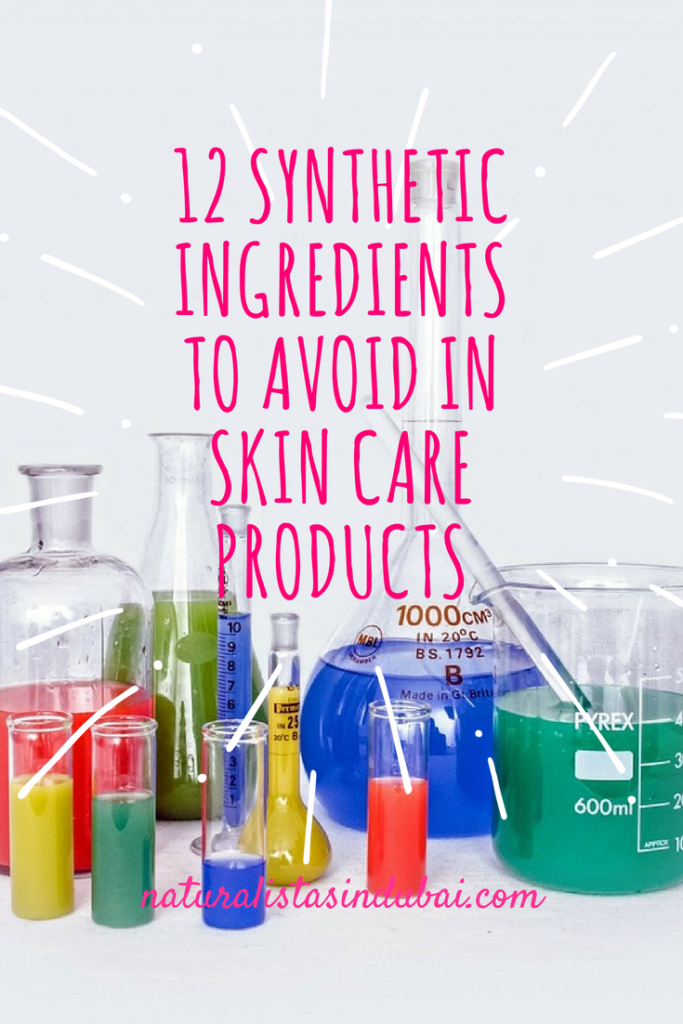Before the move to Dubai, I had very clear skin with one or two tiny pimples off and on every month.
However, within a few months of arriving, my skin went berserk and I suffered a serious bout of acne, which nearly destroyed my skin.
It left me with icepick scarring that took years to clear and if you stare closely enough at my skin under a light, there are still signs of the scarring there.

There are a variety of factors which probably contributed to the acne ranging from a change in diet to a change in environment to a change in skincare products.
I certainly never paid attention to skincare products beyond the basics before I moved to Dubai.
After a long stretch of research, I began eliminating products with the more common synthetic ingredients from my skincare regimen.
This went a long way in bringing the acne under control in addition to other practices like dermabrasion and chemical peels.
There are thousands of synthetic ingredients out there and if one were to avoid everyone, you might as well leave the planet or don’t put anything on your skin at all.
Unfortunately, this isn’t possible so I’ve narrowed the list down to the 12 synthetic ingredients you must avoid below:
12 Most Common Synthetic Ingredients to Avoid in Skin Care Products
1. Parabens
I.e. methyl, propyl, butyl, and ethyl. They are cheap preservatives and fillers, which extend the shelf life of products. Unfortunately, they also cause skin irritation.
2. Diethanolamine (DEA) and Triethanolamine (TEA)
These are highly acidic synthetic emulsifiers and/or foaming agents. They can cause allergic reactions, eye irritation, and dry out the skin.
It appears on labels under other names as well such as – cocamide DEA or MES and Lauramide DEA.
3. Synthetic Colours
This is usually labelled as FD&C or D&C, followed by a colour and a number. Some of them have been identified as carcinogenic.
4. Synthetic Fragrances
The word fragrance on a label can mean so many different things which is never mentioned on the label.
Among the problems associated with these are headaches, dizziness, rash, hyperpigmentation and skin irritation. Fragrance-free works just as well.
5. Imidazolidinyl Urea and Diazolidinyl Urea
Both of these ingredients are used as preservatives as well and can cause contact dermatitis.
There are gentler more natural preservatives, which I will explore in a future article.

6. Sulfates
That really great foaming action you get from cleansers and shampoos is courtesy of sulfates.
Unfortunately, they cause skin and eye irritation, dandruff and can aggravate allergies.
Apart from being labelled as sodium lauryl sulfate (SLS) on a bottle, other fancy names for it include Laureth sulfate and ammonium laurel sulfate (ALS).
Also, pay attention to products that claim “derived from coconut” as a foaming agent.
7. Petrolatum
A cheap filler which leads to dry skin and chapping. It can also suffocate the skin and scalp.
8. Propylene Glycol
It is an odourless and tasteless substance used to maintain moisture is cosmetics. However it can cause allergic reactions.
Other names it goes by include 1,2-dihydroxypropane, 1,2-propanediol, methyl glycol, and trimethyl glycol.
9. Stearalkonium Chloride
This is used as a conditioning agent but it can irritate the skin.
10. Triethanolamine
This is also known as TEA. It is used to adjust the pH in cosmetics and convert acid to salt (stearate), which then becomes the base for a cleanser.
It is known to cause skin irritation and dryness as well as allergic reactions.
11. Aluminium
I always thought this was something used in buildings until I started paying more attention.
It’s a heavy metal that has the ability to affect cells when absorbed for extended periods.
12. Mineral Oil
This is a derivative of crude oil which does nothing really. It just sits on the skin and clogs it leading to breakouts, premature ageing and other skin disorders.
The above also applies to hair care ingredients. A quick glance at the label on a product before you purchase should help you to make an informed choice.
If there’s another awful ingredient you think should be on the list, let me know in the comments section and I’ll include it.
For a more comprehensive list, check out the database on Environmental Working Group.
My next two articles will feature what kind of natural and organic products I have in my hair & skincare arsenal.
